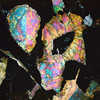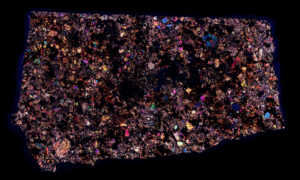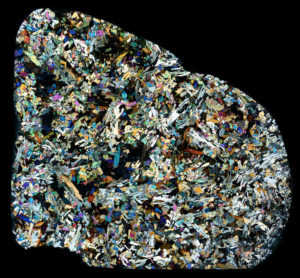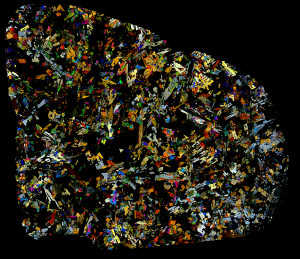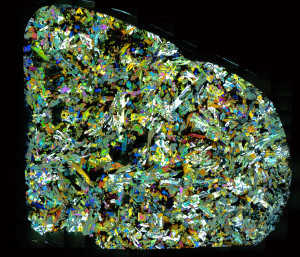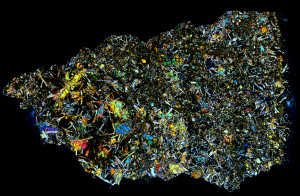
Pasamonte Meteorite Thin Section
Taken in cross polarized light, this is a remarkably beautiful thin section of the Pasamonte Meteorite. The Pasamonte Meteorite is famous in history as the first observed fall to be photographed. Harvey Nininger played an important role in cataloging and recovering many of the specimens currently located in museums and private collections. The Pasamonte Meteorite is described here as:
a brecciated, non-cumulate, polymict eucrite, showing dark fine-to medium-grained, subhedral to euhedral, lithic and mineral fragments set in a light, friable, sugary, ash-gray matrix with a high porosity
View Meteorite Thin Section Panoramas:
View and interact with image on Gigapan | View Panorama with krpano
View on Flickr
View on Tumblr
